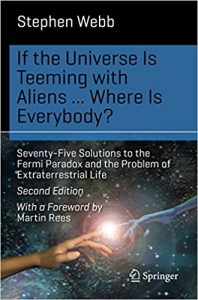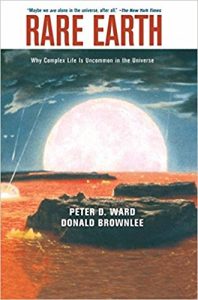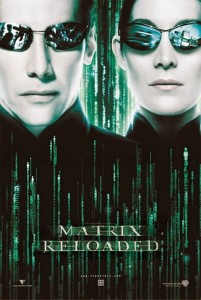
As our technology becomes more advanced, and we become smarter, and star-gazers begin to ask the right questions, more earth-like planets are being discovered. With these discoveries come the possibilities of other life forms, and uncovering the answer to Enrico Fermi’s question: Where is everyone?
Newly discovered exoplanets—like Proxima b and the seven Trappist-1 planets—have teased us with the potential of possible life. Just this April an exoplanet, which is being referred to as Super Earth, has excited scientists and we-are-not-alone enthusiasts into thinking maybes and what ifs.
Super Earth, LHS 1140b, is a mere 39-40 light years away. This distance makes it feasible for NASA’s James Webb Space Telescope, which will launch in 2018, to get a closer look and study the exoplanet for life and/or life-giving conditions.
Super Earth
LHS 1140b gets it name from the small, faint red dwarf star it orbits, LHS 1140, and is dubbed super because of its size in comparison to Earth’s. It’s 40% larger than our home planet and is 11,000 miles in diameter, 6.6 times the mass of Earth. Super Earth has a much higher density than Earth and is estimated to be five billion years old. (Probe Note: Earth’s equatorial diameter is 7,926 miles and is estimated to be 4.543 billion years old.)
Before the recent discovery of these exoplanets, Earth was considered the largest rocky planet. With these newly discovered earth-like planets, the hope for finding life seems, if nothing else, possible.
Unlike the Trappist-1 planets, LHS 1140b’s host star spins slower and emits less radiation, says Geneva Observatory’s Nicola Astudillo-Defru. This condition may suggest LHS 1140b has the ability to maintain an atmosphere, water and stable compounds. And maybe life.
Fermi Paradox Becomes Even More Important
Once the James Webb Space telescope studies LHS1140b, and if all the conditions are right, but we don’t find life, the Fermi Paradox again becomes a significant query. Where is everyone?
In my March blog posts, we discussed possible answers to the question: Where is everyone? The first of March we examined Drake’s Equation and self-destruction, and in a following blog post we examined Panspermia and The Great Filter for explanations as to why we haven’t encountered extraterrestrial life forms.

Scientists, astronomers, physicists, and imagination-laden individuals have offered an array of hypotheses to answer the question. Physicist and author, Stephen Webb, presents seventy-five solutions to answer the Fermi Paradox in his book, If the Universe is Teeming with Life…Where is Everyone?
Webb organizes answers to the Fermi Paradox into three categories:
- The aliens are here.
- They exist, but have not communicated with us yet.
- They do not exist.
(As a writer of Science Fiction and as someone who has had her own close encounter, my vote is on number one.)
There are four other hypotheses that warrant consideration: Rare Earth, The Zoo, The Hologram, and The Simulation. Some of these I include because they’re just so damn fascinating.
Possible Fermi Solutions
Rare Earth
While we may find life on other planets, what type of life will it be? Intelligent life may be exceedingly rare as pointed out in 2000 by Peter Ward, professor of Biology and of Earth and Space Sciences at the University of Washington. Ward and Donald E. Brownlee, astronomer and astrobiologist, coauthored the book Rare Earth: Why Complex Life Is Uncommon in the Universe. The term Rare Earth was coined with the publication of Ward’s and Brownlee’s book.

The authors conclude that we are unique. That earth is not typical but an exception. They argue that the emergence of complex extraterrestrial life requires serendipitous circumstances, and that events, such as the appearance of multicellular life forms, are rare—even accidental.
This is contradictory to the Copernican Principle, named after Renaissance mathematician Nicolaus Copernicus, which suggests that earth is not in a central nor favored position in the universe—also known as the principle of mediocrity and supported by such well-known astronomers as Carl Sagan and Frank Drake.
The principle of mediocrity depicts earth as common while Ward and Brownlee argue that we are rare. If we are the exception, what Great Filter barrier were we able to permeate that no one or nothing else has managed? Is intelligence an evolutionary accident?
If we are indeed rare, then perhaps the Great Silence exists because we are the only ones listening. No one else is out there.
The Zoo Hypothesis
The Zoo Hypothesis proposes that we are not unique and that highly advanced extraterrestrials are watching, monitoring, and waiting for the day we meet certain galactic criteria, such as technical, political, or ethnical advancements—or all of the above. Galactic laws might dictate a hands off policy until we have mastered a positive prototype the universe deems acceptable.
 These highly intelligent ETs would maintain their distance to allow for independent, natural evolution, and development. They would see their interference as being of no added benefit to themselves and a risk to the diversity of the universe.
These highly intelligent ETs would maintain their distance to allow for independent, natural evolution, and development. They would see their interference as being of no added benefit to themselves and a risk to the diversity of the universe.
This is my favorite hypothesis and a basis for my science fiction novellas in The Creep Mesquite Anthology.
“Life begets intelligence, intelligence begets smart matter and a singularity.”
Too Primitive Hypothesis
We are surrounded by highly intelligent ETs, but we are too undeveloped to detect their existence. Evidence suggests that we are but infants in the vast unknown, and if we believe this is true, then of what might much older—say millions of years older—civilizations be capable? Reflect on our own advancements in just technology over the last twenty years.
If one imagines a Type III civilization (explained in this blog post—a civilization capable of space exploration), which is a million years more advanced than us, then space travel, and new laws of physics and technologies become achievable. This advanced civilization could be capable of mastering those complex issues which perplex humankind and leave us in the dark, so to speak, with regards to an efficient means of space exploration.
Michio Kaku, an American theoretical physicist, the Henry Semat Professor of Theoretical Physics at the City College of New York, and popularizer of science put the hypothesis in an earth-bound perspective in an interview posted October 2008 on The Daily Grail website.
Kaku said: “Imagine walking down a country road, and meeting an ant hill. Do we go down to the ants and say, ‘I bring you trinkets. I bring you beads. I give you nuclear energy and biotechnology. Take me to your leader?’ Or do we have the urge to step on a few of them?”
Kaku also said: “If ants in an ant hill detect a 10-lane superhighway being built near them, would they understand how to communicate with the workers? Would they assume that the workers communicate only on ant frequencies? In fact, the ants are so primitive that they would not even understand what a 10-lane superhighway was.”
Taking Kaku’s questions into consideration and realizing, no, we do not enter the ant hill because we couldn’t communicate with them, and they wouldn’t understand us. We now have a plausible explanation to the Fermi Paradox. They are out there, but we don’t understand what they are saying. Hopefully, they will not have the urge to step on a few of us.
Hologram Hypothesis
Are we being manipulated and programmed like a video game? Have you ever felt as if you were being watched? And then wondered why certain circumventing circumstances occurred and not so randomly or, in some instances, very randomly?
(ProbeNote: This hypothesis is a combination of two existing explanations which seem to be mutually dependent upon one another—string theory and a ten-dimensional theory of gravity. The ten-dimension theory proposes nine dimension in space plus a time dimension.)
The holographic principle was given credence in 1997 by Theoretical Astrophysics Professor Juan Maldacena. Apparently, there are inconsistencies when using quantum physics to support Einstein’s theory of gravity. Maldacena’s research was a means to explain the discrepancies and gave rise to evidence supporting the string theory.
(ProbeNote: In physics, string theory is a theoretical framework in which the point-like particles of particle physics are replaced by one-dimensional objects called strings. Simply put, one-dimensional vibrating strings, too small to be seen with any of our current technology, but able to be theorized through mathematical computations, are the fundamental “everything” of the universe—a single explanatory framework—the Theory of Everything.)
Maldacena’s research and research led by Yoshifumi Hyakutake of Ibaraki University in Japan, have been interpreted, to a degree, as supporting the idea of a holographic universe. This doesn’t mean a Matrix-like illusion, but three dimensions painted onto the cosmological horizon—the boundary of our known universe.
Consider, a holographic picture changes as you move it, and though the picture is two dimensional, studying it from different angles creates a 3D illusion.
The Simulation Hypothesis
 Now let’s talk Matrix. For what purpose would an Advanced Extraterrestrial Intelligence (AETI) create the hologram in which we live? A simulation is used to solve problems, elude potential dangers, and estimate possible outcomes. The AETIs create a hologram, and we live out the simulation so they can determine the answer to their own Fermi Paradox.
Now let’s talk Matrix. For what purpose would an Advanced Extraterrestrial Intelligence (AETI) create the hologram in which we live? A simulation is used to solve problems, elude potential dangers, and estimate possible outcomes. The AETIs create a hologram, and we live out the simulation so they can determine the answer to their own Fermi Paradox.
A question such as: How long does it take a Type I civilization to reach a Type III civilization and become space gypsies?—could be a question for which AETIs are seeking answers. They could be running thousands of simulations throughout the galaxy all at the same time to observe who wins the race, how and why, and which of The Great Filter’s barriers are breached.
Then where are they? An answer: AETIs have created either a hologram in which we appear to be the only ones out there; or we actually are the only ones out here, and the galaxy is merely a simulated holographic universe. It’s an idea played out in several popular science fiction films and none-the-less disturbing to all us rebel warriors who liken ourselves to a Neo, Morpheus, or Trinity.
And even more disturbing, we wouldn’t know it.
***
Which hypothesis do you lean toward to explain why we haven’t encountered ETs? Or do you have another hypothesis we need to investigate? I love hearing from you.
The Probe’s Mission Statement
 The Probe is a blog devoted to the exploration of the unexplainable, to finding the truth in occurrences that resemble science fiction, and to researching and reporting on topics that could be flung upon the wall of weird. New posts are featured as often as I can find WiFi, and as often as I have something I think you might find interesting.
The Probe is a blog devoted to the exploration of the unexplainable, to finding the truth in occurrences that resemble science fiction, and to researching and reporting on topics that could be flung upon the wall of weird. New posts are featured as often as I can find WiFi, and as often as I have something I think you might find interesting.
Join me here for more close encounters of the alien kind, or ghost kind, or animal kind, or travel kind, and please share your own. Science Fiction or Fact? Doesn’t matter to me. I just like a story that gives me the chills, makes me laugh, makes me think, or makes me imagine. 
 Sign up to get my slightly irregular blog posts delivered directly to your email. We are becoming popular. And thank you everyone for supporting me through all my learning of how to do a blog. If you haven’t signed up, better hurry. They’re going fast.
Sign up to get my slightly irregular blog posts delivered directly to your email. We are becoming popular. And thank you everyone for supporting me through all my learning of how to do a blog. If you haven’t signed up, better hurry. They’re going fast.
(BTW the animal pictures are my children’s animal totems. My daughter is Turtle. My son is Otter. My granddaughter is the Great Blue Heron. And Fox is my little grandson we lost in April 2016 but whose presence I feel every day.) 
- Urban Legend in the Making - April 22, 2024
- Coghlan’s Traveling Coffin Urban Legend - April 4, 2024
- Richmond Vampire Urban Legend - March 7, 2024





4 replies on “New Super Earth Best Bet at Finding ETs and Fermi Solutions”
I enjoyed your post.
As you already know Et’s and aliens are my “cup o’tea”. I believe that from time to time some of them visit earth. However, I must leave your deep questions and hypothesis to sharper minds than mine. I base my belief on the fact that the Jewish/Christian Bible makes every allowance for the ET’s existence and presence.
Thank you, Ike, always great to hear from you. Will be joining your discussions on THINK AGAIN soon.
You know I’m in total agreement with the fact that the Bible and God are ok with ETs. And I’m kinda thinking God was probably an Ancient Astronaut.
Readers if you are interested in reading profound and knowledgeable interpretations of the Bible, check out Ike’s website.
http://wwwthinkagai.blogspot.com/2017/04/39-forerunner-meets-messiah.html?utm_source=feedburner&utm_medium=email&utm_campaign=Feed%3A+blogspot%2FeMMxa+%28+++++++++Think+again%29
In west-central Spain, there’s a big river-side town with a gorgeously huge church. At one of the entrances, above the doors are the usual gods, angels, and even an astronaut!! Really!!
Hi Tony,
Thank you for your comment. Isn’t it fascinating the amount of works of art —from olden times—that show representations resembling extraterrestrials? It really fascinates me. Hugs. Clara.